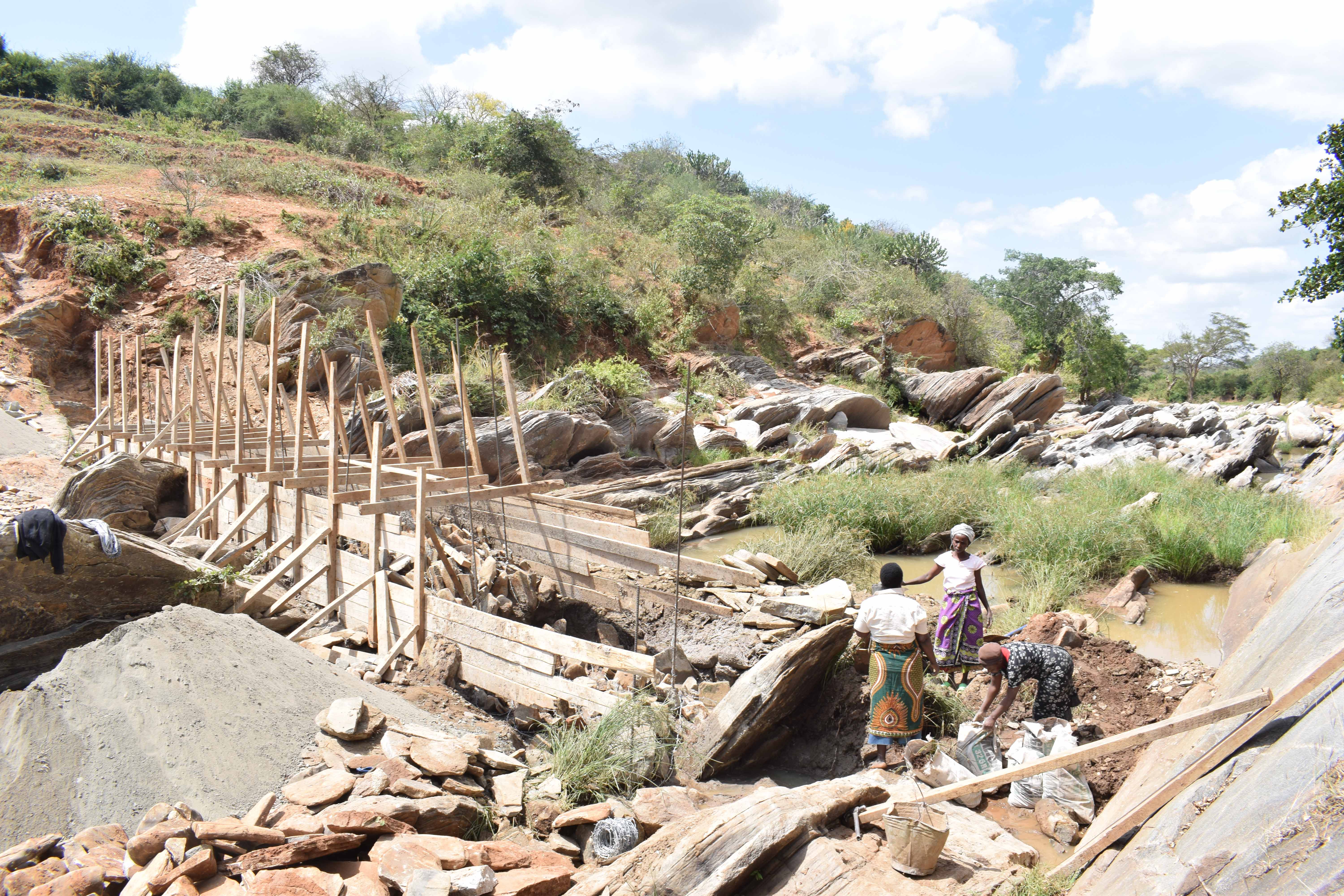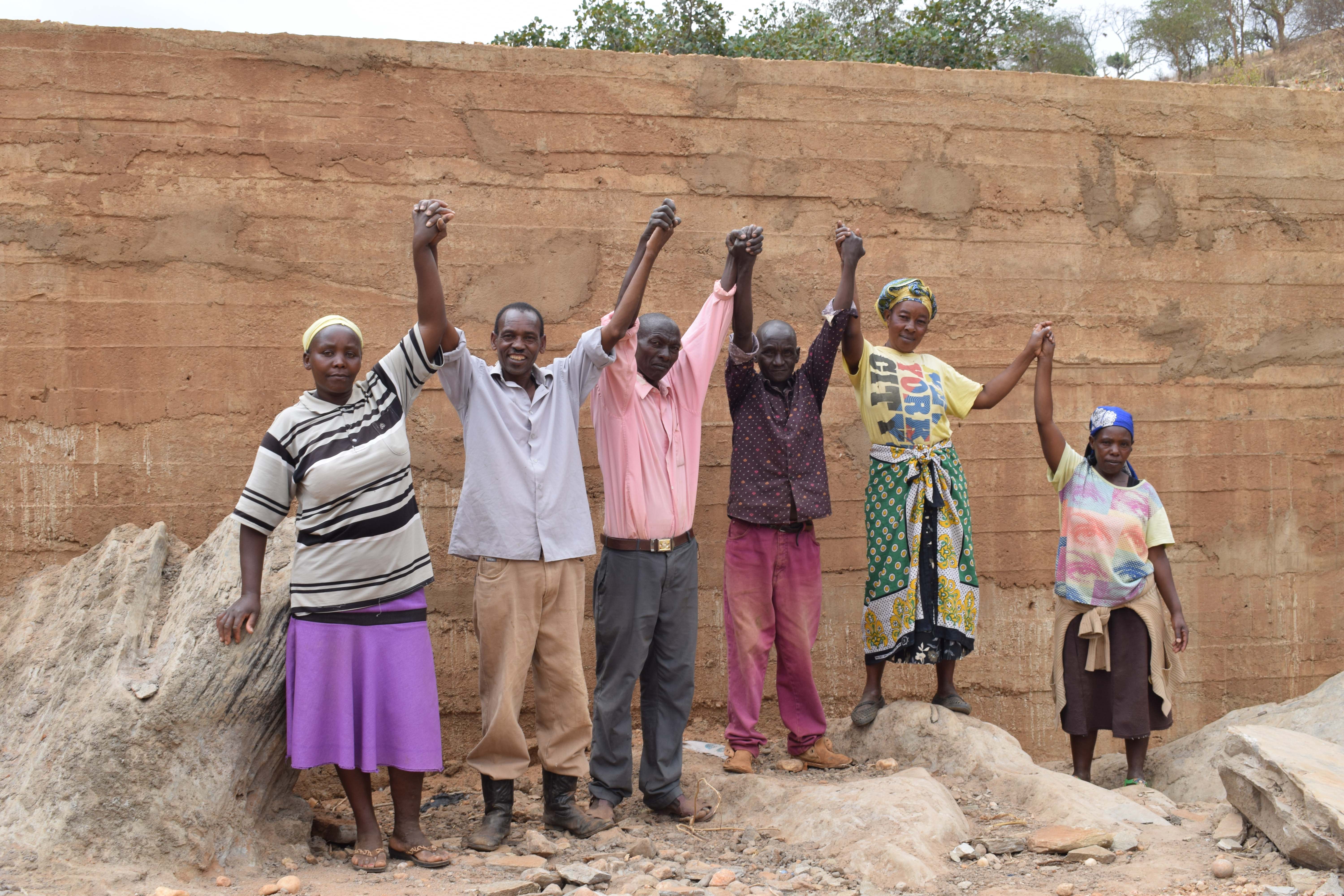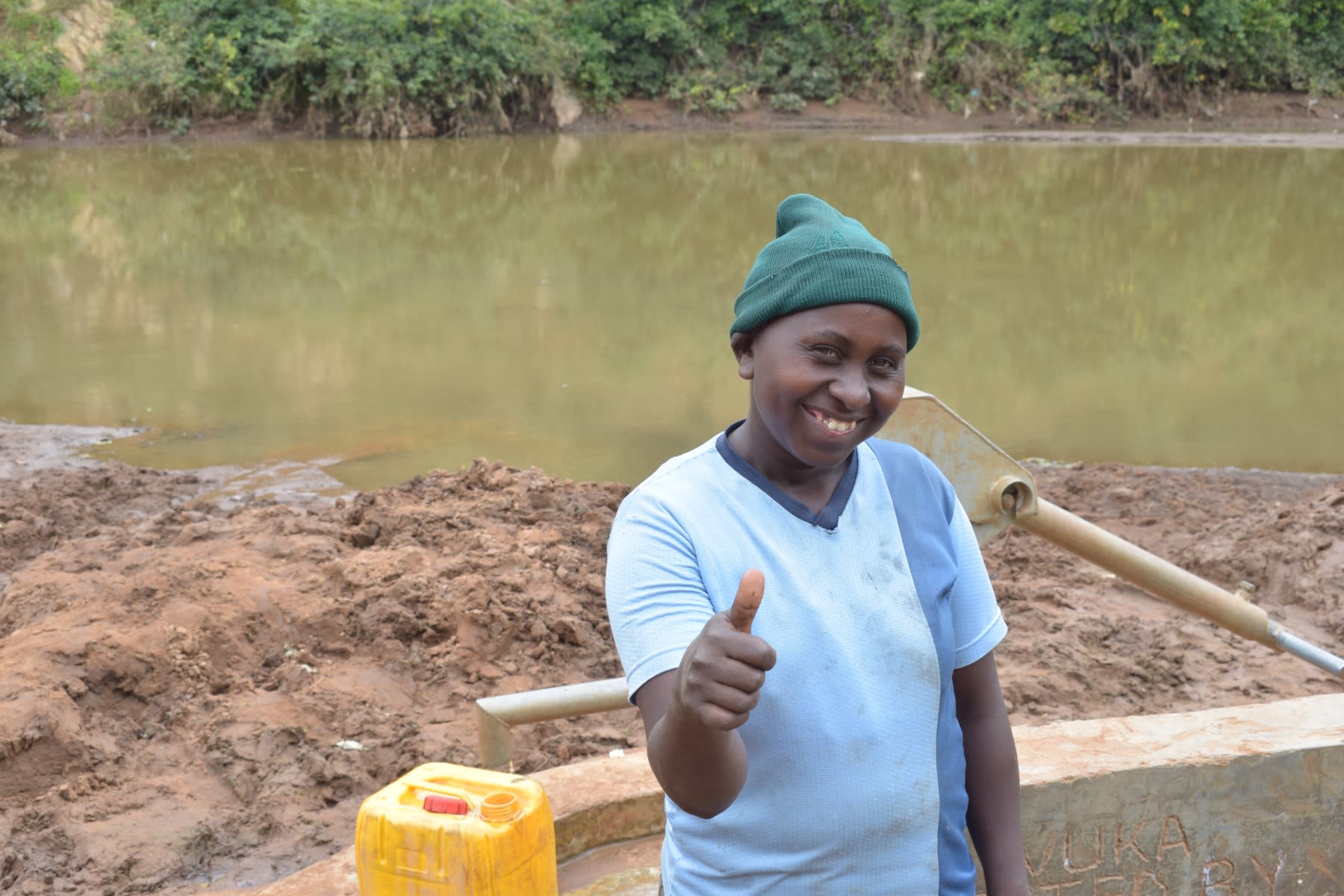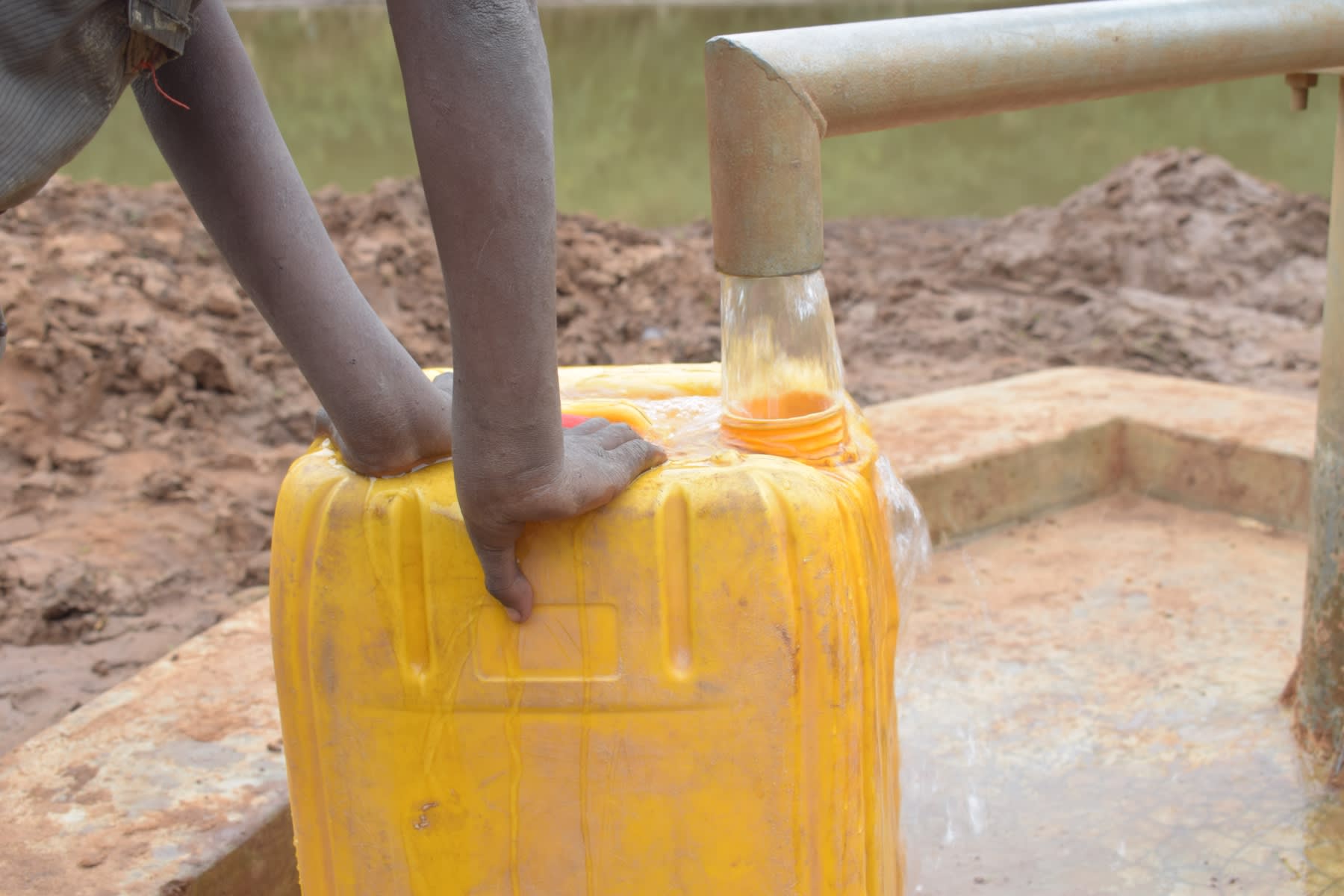This project is a part of our shared program with Africa Sand Dam Foundation. Our team is pleased to directly share the below report (edited for clarity, as needed).
Welcome to the Community
Ivuka Self-Help Group was formed in January 2016 with the objective of developing and enhancing the social welfare of its members. The group now has a membership of 25 members who come from Ivumbu, Kasioni and Kaani Communities which have a total population of 4,220 people. Their greater region hosts 14,000 people coming from 1,650 different households.
(Editor’s Note: While this many people may have access on any given day, realistically a single water source can only support a population of 350-500 people. That’s why we’ve formed a relationship with this group and plan to support them to do multiple water projects over the next couple of years until adequate water is available. To learn more, click here.)
We visited with and interviewed two different families. At the first household, we met with 70-year-old Teresia Kilonzo who takes care of her grandchildren during the day. At the second household, we spoke with 41-year-old mother Mbithe Nzomo.
Water Situation
The majority of people living in this region must travel to the Thwake River to find water. Some families are able to decrease these trips with the collection of rainwater - if they are able to afford a tank and gutter system (you will see one of these 3,000-liter tanks in the pictures from our visit to "household 1"). Of course this is entirely contingent on the weather, and unfortunately there are rainless months in western Kenya. Both rainwater and the water collected from the river is used for drinking, cooking, irrigating farms, and cleaning.
At first look the river appears dry, but community members know that if they dig a hole in the sand, they’ll hit water. These holes are muddied by the surrounding sand, and are open to contaminate from many other sources. The water in the riverbed is especially dangerous during and after heavy rains. Feces, chemicals from local farms, and other waste is washed into the water. These scoop holes are also unguarded and open to wandering animals that need a drink (or a bath!).
Women carry a plastic jerrycan and a smaller container to the river, using one to fill the other. Most households have at least one pack animal to help them carry their full 20-liter containers back home. After drinking, community members suffer from waterborne diseases.
(Editor's Note: Please note that the scoop hole picture included in this report is an example taken from a different project.)
Sanitation Situation
Latrine coverage here is impressive; every household has at least one pit facility where they can properly dispose of waste. Over half of all the Ivuka Self-Help Group members have hand-washing stations and helpful tools like dish racks and clotheslines. 65% have dug a pit for their garbage, which keeps it from blowing around and polluting the environment.
Farmer Muthama Nzioki still notices lots of room for improvement, telling us that "Although all members of our group have pit latrines in their homes, most lack the basic knowledge of proper sanitation. Most people don't wash hands after visiting the latrines and very few treat drinking water because they think spending 30 shillings on "water guard" (water treatment chemicals) is a lot of money. We are therefore looking forward to the sanitation training which will be an eye opener to most if not all group members."
Plans: Hygiene and Sanitation Training
To address gaps in hygiene and sanitation practices in these three communities, training will be offered to self-help group members on three consecutive days. The members will learn about useful practices and tools to improve health, and then will be able to share those with their families and neighbors. Water transport, storage, and treatment methods will be taught, and hand-washing will be a focus. Group members will learn how to make their own hand-washing stations with everyday materials. To motivate participants, we must show the links between these activities and their people’s health. To further develop group members, we will work together to draft an action plan that will realize good sanitation and hygiene in each home, the overall villages, and their water points.
Plans: Sand Dam
Members of Ivuka Self-Help Group heard about us from a neighboring self-help group that we are working with. They then approached our field officer with a request for support, and after verifying that they had the relevant registration documents, they were put on our mandatory six-month probation period. During this time, locals are expected to seriously take development to heart and begin constructing hygiene facilities and gathering local materials to be used in the construction process. After that, we returned to verify their water challenges and their need for additional support. The evidence to warrant our support was sufficient, and the group was taken on board. Their first proposed site for a sand dam was also approved by our technical team because there is firm bedrock and wide banks. This particular sand dam is projected to be 24 meters long and 3.95 meters high.
This sand dam will be one of many construction projects to come in the next few years. We will spend a total of five years unified with this self-help group to address the scarcity of clean water in their three communities. More sand dams will be built to transform the environment. As the sand dam matures and builds up more sand, the water table will rise. Along with these sand dams, hand-dug wells will be installed to give locals a good, safe way to access that water.
As the sand dam construction begins, community members will start excavating their first adjacent hand-dug well (click here to see that well project).

 Sand Dam
Sand Dam
 Rehabilitation Project
Rehabilitation Project





































